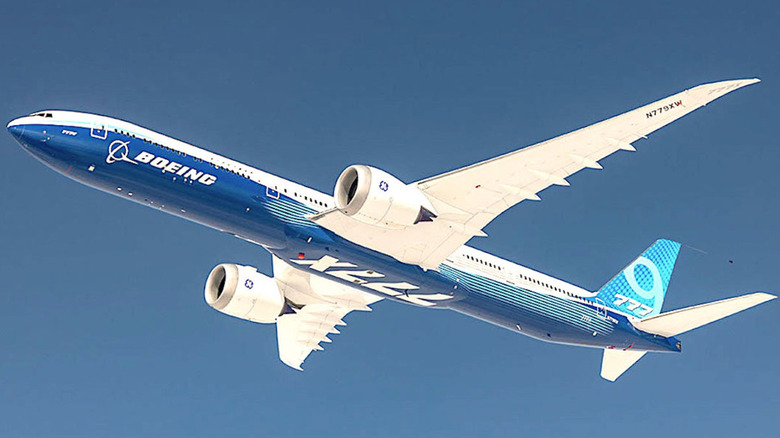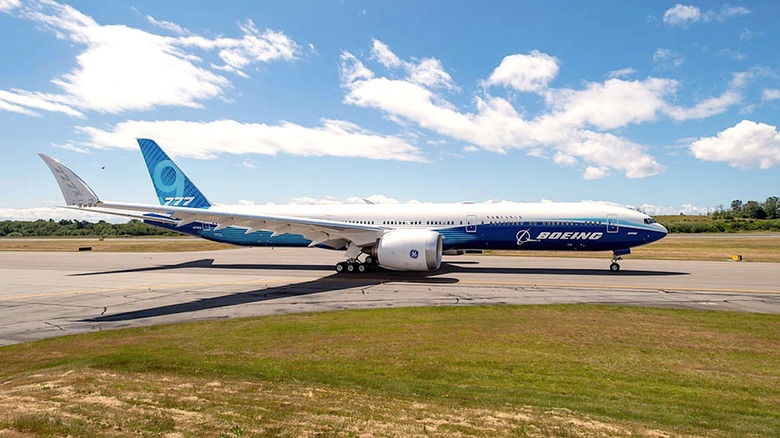How Wide Is The Boeing 777X Jet And Why Does It Need Folding Wing Tips?
It's been nearly a century since William Boeing laid the groundwork for his namesake company, and over the ensuing decades, Boeing became one of the most prominent names in the aviation arena. In that time, the company's brand name and logo have graced a long list of popular passenger jets, many of which have ferried travelers to distant corners of the globe. Likewise, they've notably been painted on the side of some of the larger planes to take to the skies, as Boeing has a bit of a reputation for manufacturing supersized aircraft.
Boeing's "size matters" mentality has, arguably, never been more evident than in its 777X passenger jet, which has been in development since 2013. A legitimate mammoth of an aircraft, the 777X will rank as the largest twin-engine jet in existence when it takes to the skies, with only Airbus' double-decker, quad-engine A380 beating it in terms of size. Still, the Boeing 777-9 version of the X is almost 15 feet longer than the A380, even as the latter plane bests any X in the game in terms of wingspan, clocking at almost 262 feet (or 80m) from tip to tip.
Despite boasting a shorter wingspan, the 777X is hardly a slouch when it comes to the size of its wings. Indeed, the jet's wings stretch a whopping 235.5 feet across. Some might even argue that, from a design standpoint, the 777X is far more impressive, as its wings can actually fold up when they need to.
There are a couple of reasons the 777X has folding wings
The wings of the Boeing 777X passenger jet don't fold up in their entirety. Instead, the tips fold up. Boeing engineers outfitted them with a hinge mechanism that reduces the wingspan from just over 235.5 feet to a more manageable 212.9 feet. At a surface level, a 22-foot variance may not seem all that significant. However, the unique folding wing design proved a pivotal element in the 777X's development because the jet's full width made it too large for many airports throughout the world.
That begs the obvious question as to why Boeing's design team would purposely make the 777X's wingspan larger than some airports could accommodate to begin with. As then University of North Dakota Associate Aerospace Professor, Gary Ullrich, explained to Popular Science in 2018, longer wings tend to produce less drag than shorter ones. If you're wondering why that might be important, it has been proven that lowering drag (a form of wind resistance) can markedly improve a jet's fuel economy.
Given the potential savings in jet fuel alone, one can hardly blame Boeing's team of engineers for opting to fit the 777X with folding wings instead of merely shortening them. That's even more true as the folding wing design will allow the 777X to fly into and out of more airports — assuming, of course, Boeing's 777X is ever actually delivered to airlines.

